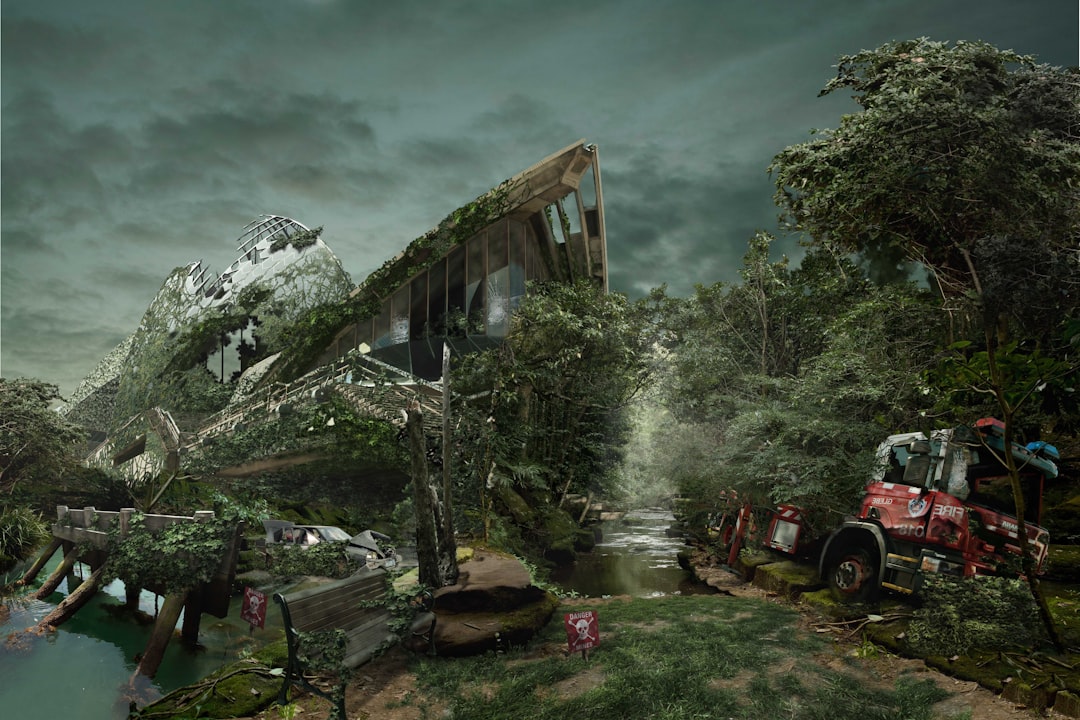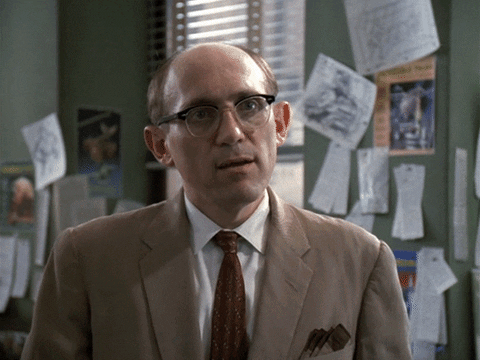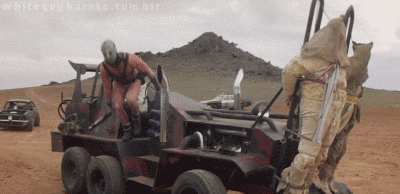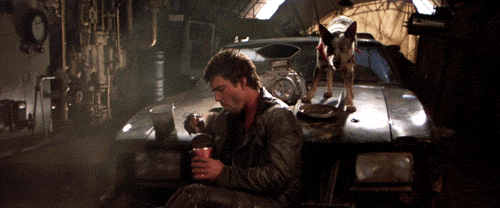
Things fall apart. That’s the nature of things. One day, the electric socket that powers your yard’s irrigation system is running fine. The next day, the circuit is tripping like a tech bro who just discovered psychedelics after a TED Talk on micro-dosing.
You don’t have a go-to electrician because you haven’t needed to do any major electrical work on your home yet (🤞). But you do have the internet, where you can find anything with just a few clicks.
The clicks bring you to a profile for an electrician named Aram. He looks solid—about 200 reviews, 4.5 star average. You call and explain the problem. Aram says he can fix it tomorrow, then he asks you to text him your name and address. You text the deets. The next day Aram shows up as promised.
Minutes after he arrives, Aram diagnoses the problem and quotes you price. You agree to Aram’s price. He spends the next twenty minutes replacing the socket. When he’s done, Aram says he’ll warranty the work for a year, but you have no doubt that the socket will work like a champ. You pay Aram.
That should be the end of the story, but it’s only the beginning. Because after fixing the thing that fell apart, Aram tells you about a situation that can’t be fixed—a situation called civilization.
“How long you live in the Valley?” Aram asked.
“I was born here,” I told Aram, omitting the fact that I spent seven years living on the East coast, a few years in Los Angeles living on the other side of the hill, and one year between college and law school where I walked the Earth, like Caine from Kung Fu, minus the hero shit.
“You grew up in Chatsworth?” Aram asked.
“Sherman Oaks.”
Turns out, Aram grew up in Sherman Oaks too. We don’t have any mutual friends, but we do have mutual reference points. Movies at the Galleria, back when the Galleria was an actual mall. The beef-lamb shawarma at Pita Kitchen, back when I ate beef and lamb. Sherman Oaks Little, back when a pack of Big League Chew cost seventy-five cents. Good times.
“Sherman Oaks used to be nice,” Aram said. “Now, Sherman Oaks is doomed.”
Doomed? That sounded dire. But I assumed Aram was just waxing nostalgic about a time when Sherman Oaks was nice at a fraction of the price.
“I would’ve been happy to buy there, but the prices are bonkers.”
“Tell me about it, bro. Yesterday, when you call, I’m at a six hundred square foot home south of Ventura. Like the tiny homes on TV. Guess how much it’s worth.”
“One million.”
“One point two million.”
“Insane.”
“No. Insane is Los Angeles. This home belongs to a client who rents it out. But his tenants don’t pay rent because they don’t have to anymore. He tries to evict them, but evictions are illegal because of Covid.”
For this, Aram blames the city council, which enacted renter protections at the start of the pandemic that remain in place to this day. I’ve heard dozens of tales of landlord woe these past few years. Some stories are legit, some stories sound like the world’s smallest violin, and some stories sound like the landlord is bucking for a spot in a Reddit community called “Am I the Asshole?” It takes all kinds, I guess.
“What did your client do?” I asked.
“He called his lawyer and his lawyer told him to give the tenants twenty-five grand to leave.”
“Twenty-five grand to leave!? I’m in the wrong business.”
“What you do?”
“Writer.”
“Yeah, writing is wrong business.”
“Did it work? Did your client get his tenants to leave?”
“Yes, but then real trouble begins.”
“That sounds ominous.”
“You have no idea, bro. House is empty. It’s a mess because old tenants don’t care. But he fixes everything. Brand new. I do electric. New lights everywhere.”
“The whole shabang.”
“He rents house again, but guess what happens?”
“Hey gets an obscene amount for rent because rents are obscene?”
“Bro, it’s a bad news kind of story. Guess again.”
“He can’t rent it for some reason?”
“Exactly. Ask me why.”
“OK. Why?”
“Squatters.”
“The original tenants came back?”
“No. They have twenty-five grand. They set. Squatters are homeless people. He calls the police, but the police say they can’t do anything.”
That sounded fishy to me, but this isn’t my story, so I nodded and played along.
“He calls his lawyer. Lawyer tells him, pay the homeless people to leave.”
The lawyer sounded like a one-trick pony, but what did I know?
“He paid them?” I asked.
“One grand each.”
“How many people?”
“Six.”
“Six people in a tiny home!? Sounds cramped.”
“Bro, you missing the point. Rental property supposed to make money, not lose money.”
I assume everyone who gets into the landlord game does so to make money. But I’m not sure there are any guarantees in business. Investments, after all, are speculative, and investing can be brutal. Wasn’t that the lesson Louis Winthorpe III imparted to Billy Ray Valentine right before the finale of Trading Places?
Think big, think positive, never show any sign of weakness. Always go for the throat. Buy low, sell high. Fear? That’s the other guy’s problem. Nothing you have ever experienced will prepare you for the unlimited carnage you are about to witness. Super Bowl, World Series—they don’t know what pressure is. In this building, it’s either kill or be killed. You make no friends in the pits and you take no prisoners. One moment you’re up half a mil in soybeans and the next, boom, your kids don’t go to college and they’ve repossessed your Bentley. Are you with me?
“After he gets homeless people out, place is trashed,” Aram continued. “He hires cleaning crew and construction crew. I fix a few things, then install security system so he can watch property from his house.”
“And that solved the problem?”
Aram shrugged.
“Who knows? The squatters will be back. The politicians don’t care. The police don’t do anything. We’re doomed.”
Doomed? There’s that word again. It sounds like some heavy shit because it is.
“Everybody doomed,” Aram said. “Los Angeles doomed. California doomed. America doomed. World doomed.”
“There’s no hope, no escape?”
“Bro, there is no escape.”
I looked around my neighborhood. The sun was out. The sky was blue. Butterflies, birds, and bumblebees were doing their thing. My neighbors walked their dogs. In the distance, I could hear the PA system for the local elementary school. The only real sign of doom I could see was a Rick Caruso for Mayor lawn sign.
“One day, it’s all going to go away,” Aram said. “Everything gone. Apocalypse.”
I laughed. Aram looked serious.
I wasn’t trying to be a Pollyanna. Los Angeles has real problems—beyond Rick Caruso’s candidacy. California has real problems too. Ditto for America and the world. Massive, intractable, existential problems. And yet, I couldn’t help but worry about the electrician’s apocalyptic mindset.
“Civilization is a lot more durable than we think,” I said.
That made Aram laugh, but it was the way he laughed—a cynical snicker—that made me worry.
“I’m not kidding,” I said.
“Me neither.”
In situations like this, I usually offer book recommendations. Sapiens: A Brief History of Humankind by Yuval Noah Harari zooms out about as wide as you can go on the story of civilization. Like many good histories, it’s a reliable tonic for the doom and gloom that can sometimes obscure humanity’s present and future. But Harari’s book is wildly popular. Even if you haven’t read it, you probably heard about it on a podcast, or heard about it from a friend who won’t shut up about a podcast you just have to listen to.
A less popular book called The Last Apocalypse: Europe at the Year 1000 A.D. by James Reston, Jr. is my go-to book for combating existential dread. It came out in 1999, right around the time everyone thought Y2K would be the end of us. The timing was excellent because just as the talking heads were spreading rumors of digital doom, Reston came out with a story of another can’t-miss apocalypse that—spoiler alert!—missed the mark by a million miles. One takeaway from Reston’s book: humans have been telling stories about the end of the world for as long we’ve been telling stories. Another takeaway: people are intoxicated by apocalyptic thinking because it’s flattering to believe that you’ll witness the end of something as massive as civilization.
“Civilization is lie,” Aram said. “One day, everything normal. Then, boom! Power goes, water stops, police gone. It’s Mad Max, bro.”
Once again, Aram was serious. According to him, bands of armed marauders, who may or may not be leather daddies, will pick apart the dying carcass of civilization, looking for fuel, food, and (hopefully) sun tan lotion. When there’s nothing left for them to scavenge, the marauders will turn their sights on the handful of people who thought ahead, the people who spent the fat times prepping for a lean and mean existence. People like Aram, who punctuated his apocalyptic vision with survivalist plans that included canned goods, water purification tablets, and guns.
I love the Mad Max movies, but I think they’re bullshit. Actually, that’s not quite true. I think the Mad Max movies are brilliant, but misunderstood.
Mad Max is about the fall of civilization, but Max’s pursuit of the biker gang that murdered his family is about justice, and maybe revenge, not doom or the nihilism it brings. In other words, Mad Max is about setting things right, especially when everything has gone wrong.
The Road Warrior also offers a defense of civilization. When the refinery becomes untenable, Max cowboys-up and drives a tanker truck full of sand into the desert, leading the marauders on a wild goose chase so that a community of survivors can escape. At the very end of the film, the feral kid with the boomerang reveals himself to be the narrator, explaining that he grew up to become the “Chief of the Great Northern Tribe.” Once again, civilization wins! But in this telling, Max, who is known to post-apocalyptic historians as a legend called The Road Warrior, is never seen again.
Mad Max: Beyond Thunderdome and Mad Max: Fury Road both offer skeptical views of civilization as corrupt (looking at you, Tina Turner) and wicked (Immortan Joe’s hydro-electric citadel, Gas Town, and the Bullet Farm). In both films, the heroes fight against the powers that run these so-called civilized enclaves. But ultimately, the endings of both movies tell us those fights were about building a better world, not tearing down the world we have. In other words, these post-apocalyptic movies don’t celebrate the apocalypse, they remind us why civilization is worth fighting for, which is the actually the reason why we tell apocalypse stories in the first place.
And yet, a lot of people consume apocalypse stories and conclude, like Aram, that these movies and books are blueprints for how to live after the shit hits the fan because it’s a certainty that the shit will hit the fan. Forget the fact that history repeatedly tells a different story of rebuilding civilization every time someone, or something, knocks it down. Forget the fact that whenever there’s a disaster, people rush to help, even the leather daddies, who send money to the Red Cross instead of looting sporting good stores for guns and hockey masks. Forget the fact that it’s incredibly arrogant to believe that out of the billions of humans who ever stomped on the terra, YOU will be there to witness the end of everything.
“Better get ready,” Aram said. “Stock up on food and guns. Learn skills. Mad Max, bro.”
Aram didn’t use the word prepper, but that’s what he was. Preppers spend their lives prepping for the end of the world as we know it—and surviving somehow. Back when I was a reporter, I actually wrote a story about prepping and personal finance. Fun fact: prepping for the end of the world is expensive.
Every prepper I interviewed was serious about prepping. Some spent thousands of dollars they didn’t have. Others were loaded and spent small fortunes on luxury apocalypse bunkers. But once it got beyond the sensible advice of stockpiling water, food, and emergency supplies for a week or so, everything they said felt like apocalypse cosplay to me. After all, these people who were positive that the end was nigh kept paying their taxes, paying their credit card bills, and paying their life insurance premiums.
“You really think civilization is done for?” I asked.
“I know it for sure, bro. The world is over. We just don’t know it yet.”
I wanted to keep chatting about this doom stuff, but Aram’s phone buzzed with a text.
“My wife,” he said. “Got to pick up groceries for dinner.”
“There’s a Ralph’s a few miles away.”
I was tempted to make a joke about how the Ralph’s, which takes cash and credit, wasn’t Bartertown. But that felt like a cheap shot. Besides, Aram was a good electrician, and if our house is still standing next month, I may have some more work for him.
If you’re new here, please👇
If you’re a returning champ, please👇
Stick around and chat!
You know the drill. I’ve got questions, you may or may not have answers.
What do you recommend to treat a case of doom?
What’s your favorite Mad Max movie?
What’s your favorite work of apocalyptic media (book, film, TV show)?
If you were certain the apocalypse would happen within the year, would you pay your bills? If not, what would you do with the money?
Are you a prepper? Or, do you know any preppers? If so, what can you tell us about living that prepper life?








First of all, I feel like post is a direct attack on my last story. :-)
2. Fury Road, hands down. I know there's recency bias, but it's probably a top 3 action movie ever and does incredible story work and world-building with such economy and efficiency. Road Warrior is next.
3. Does Succession count?
Re: apocalyptic thinking, you're right, it's all overstated and to some degree even wishful thinking. We'll just continue to trudge along, solving some problems, failing to solve others, creating new problems, etc. etc. ad infinitum. The idea that the world will end is analogous to conspiracy theorizing. People want to think someone or something is in control, rather than it all being random. But it is all random, which is too much for most people to grapple with.
Almost spit out my coffee reading these lines:
“What you do?”
“Writer.”
“Yeah, writing is wrong business.”
Priceless!